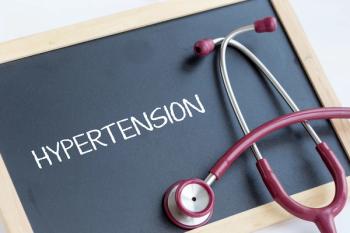
CVD Risk Faces Undue Influence From Social Determinants of Health
Social determinants found within a person’s environment, mainly where they live and work, have been shown to influence outcomes related to health, functioning, and quality of life, especially where risk of cardiovascular disease (CVD) is concerned, according to study results that will be presented during ACC.20/WCC Virtual.
Social determinants found within a person’s environment, mainly where they live and work, have been shown to influence outcomes related to health, functioning, and quality of life, especially where risk of cardiovascular disease (CVD) is concerned, according to study results released today that will be presented during ACC.20/WCC Virtual, this year’s American College of Cardiology (ACC) Annual Scientific Session jointly held with the World Congress of Cardiology on March 28-30. The
“Impact of Social Determinants of Health on Cardiovascular Diseases” comes from a team of investigators out of George Mason University (GMU) led by lead author Tarang Parekh, MBBS, Department of Health Administration and Policy at GMU and lead study author.
“We are very focused on addressing certain cardiovascular risk factors, but we forget about factors such as food, housing, and financial security that often play a major role in the development of cardiovascular disease,” Parekh stated. “We are not investing enough to address these issues. We [must] start addressing patients’ problems from a broader perspective in order to better reduce the toll of cardiovascular diseases.”
Using 2017 data on more than 400,000 US adults from the CDC’s
Also important is that, “Understanding the relationship between how population groups experience ‘place’ and the impact of ‘place’ on health is fundamental to the social determinants of health—including both social and physical determinants,”
Among the respondents, close to 1 in 10 had at least 1 form of heart disease. The 3 main SDOH shown to impact this risk were food (adjusted odds ratio [AOR], 1.51; 95% CI, 1.28-1.77) and housing (AOR, 1.54; 95% CI, 1.28-1.85) insecurity (>50% greater risk), healthcare access hardship (AOR, 1.47; 95% CI, 1.34-1.61; 47% greater risk), and high degree of financial insecurity (AOR, 2.14; 95% CI, 1.73-2.66; twice as likely) (see
Broken down, compared with respondents who did not have CVD, SDOHs occurred at much higher rates in respondents who had CVD:
- Food insecurity: 27.5% versus 21.2%
- Housing insecurity: 14.5% versus 8.78%
- Financial insecurity: 18.2% versus 8.32%
How exactly do the above increase the risk of having HD? According to the study results, food insecurity could mean individuals don’t have the ability to eat a heart-healthy diet because they can’t afford to buy those foods; housing and financial insecurity can compound stress, and that can trigger heart disease; and not being able to access adequate healthcare services could mean treatment delays and more advanced disease progression at diagnosis.
Thankfully, health systems and physicians are increasingly recognizing the influence SDOH have on their patients’ heart health and are instituting measures to break down some of the barriers they create. For example, by connecting them to resources in their communities, including SDOH questions in patients’ electronic health records, and asking about any potential issues during visits.
“We plan to further investigate the timing of heart disease development to shed more light on its relationship with social and financial factors,” the GMU team said.
Reference
Parekh T, Desai R, Pemmasani S, Cuellar A. Understanding the impact of social determinants of health on cardiovascular diseases. To be presented at: ACC.20/WCC Virtual; March 28-30, 2020; accscientificsession.acc.org/.
Newsletter
Stay ahead of policy, cost, and value—subscribe to AJMC for expert insights at the intersection of clinical care and health economics.













































